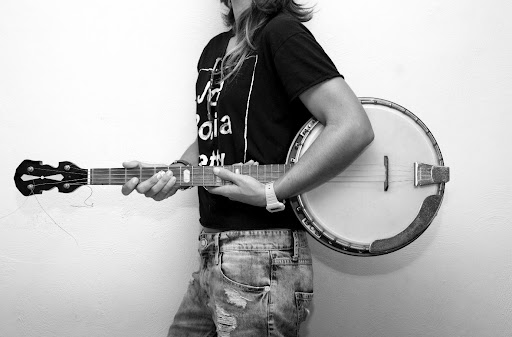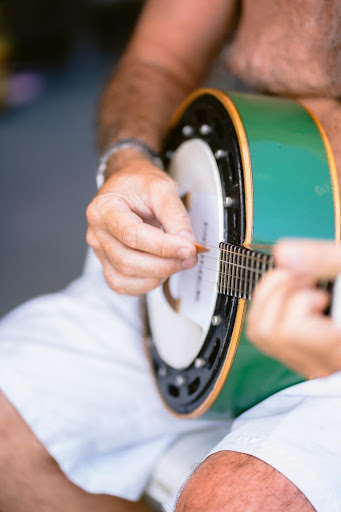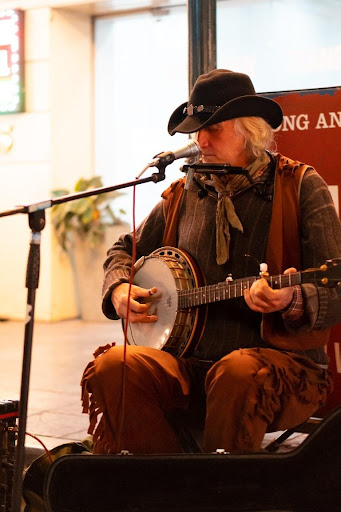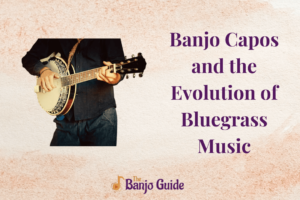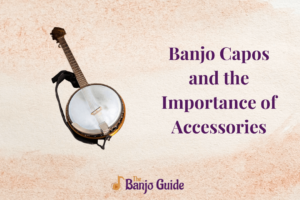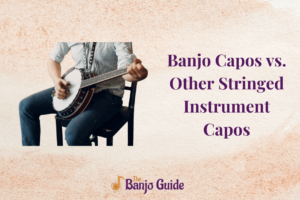Building a whole banjo from a kit might seem appealing to DIY enthusiasts. But many might feel overwhelmed with the task at hand. But building an entire banjo from a DIY kit has its benefits.
Many online sellers and branded banjo manufacturers provide DIY kits of banjos. You should only select the type of banjo you expect to build and purchase the suitable kit from any seller you like.
The article below explores the pros and cons of building your banjo from a kit. It also expects to assist you with the basics of banjo building using a kit and provides its feasibility.
Understanding the Banjo Kit Building Process: A Comprehensive Guide
A banjo kit will contain all the necessary hardware parts and basic tools that you will need to build any specific banjo. The price, parts, and assembling time varies depending on the type of banjo you have chosen.
A banjo kit usually contains parts like
- Banjo heads
- Pickups
- Bridges
- Electric components (if any)
- Pre-cut body
- Banjo neck, etc.
You will only need essential tools to assemble the parts and build a good banjo. Some tools that may come in handy during the assembling process are:
- Sandpaper
- Screwdrivers
- Clamps and glue
- Key wrench
- Small drill
- Hammer
- Soldering kit
Each banjo kit, irrespective of its brand, comes with detailed step-by-step instructions on assembling it. You can color your banjo once you follow the instructions and finish the assembly.
DIY Banjo Kits vs. Pre-Assembled Banjos: Which is Right for You?
Both DIY banjo kits and pre-assembled banjos are famous worldwide. Each of them has a good share of positives and negatives. Some essential and popular differences in the ‘building a banjo kit vs. buying a pre-made banjo’ debate are mentioned below.
Quality
In terms of quality, both banjo kits and built-up banjos can have quality issues if not purchased from the right manufacturer. Generally, pre-assembled banjos have more quality because a more significant number of reputed manufacturers are actively building ready-made banjos.
Professional players usually resort to pre-made banjos because of the guarantee of quality in them. A banjo kit’s quality depends on the user’s skill in assembling and building it. Any small mistake on the user’s part could completely spoil the quality of the banjo at the end.
Cost
In general, DIY banjo kits are much cheaper than pre-assembled banjo. DIY kits eliminate the service charge of building the banjo and, thus, can be sold at more affordable prices. But many high-quality banjo kits still cost the same as a decent pre-assembled banjo.
Regarding pre-assembled banjos, many cheaper models are available, but they all compromise quality and longevity. You can also try purchasing second-hand banjos to get pre-made ones at a cost-effective price.
Customization
Buying a pre-made customized banjo could be a pricy affair unless you are a famous or financially sound musician. Customized musical instruments generally cost much higher in the market.
But a DIY banjo kit provides ample customization opportunities. You can stain or paint the banjo body during the assembling process and act accordingly. Also, as banjo kits are relatively inexpensive, you need not worry about spoiling the instrument while exploring the custom banjo kit options.
The Benefits of Building Your Own Banjo from a Kit
The benefits of building your own banjo from a trustable kit are immense. Some of them are mentioned below.
- Building from DIY banjo kits provides excellent value for money. It is more cost-effective than purchasing a fully assembled banjo.
- As banjo kits come with complete assembling instructions and tutorials, you only need minimum knowledge and a limited number of tools to complete the assembling process.
- DIY banjo kits do not consume much time for the customer. They only take a maximum of a few days to finish a DIY banjo project.
- You can have a good banjo at the end. Banjo Kits do not make less-quality banjos. They would let you have an excellent professional banjo to play well.
- The option for personalization is immense with DIY banjo kits. You can add your personal touches during the building process, and you will end up with a unique banjo that no one else has.
- For professional players, a DIY kit allows them to experiment with the hardware and maybe upgrade certain features.
- The complicated parts and processes of building a banjo would have already been taken care of in a DIY kit. So, no complex processes would have to be done by the customer.
- A DIY kit banjo would be the best option for beginners who don’t want to spend much money on a professional banjo just for learning purposes.
The Drawbacks of Building Your Own Banjo from a Kit: What You Need to Know
Although building a banjo on your own using a DIY kit is advisable, it is essential to understand that there are drawbacks to the process, too, if not many. Some disadvantages of building your banjo from a kit are mentioned below.
- As the quality of the building depends on the person’s understanding of the process, the output banjo’s quality may vary. If you mess up any parts during the building process, you can’t have a quality banjo in the end.
- Although specialized tools and skills are not required to build a banjo from a kit, a basic understanding of tools and the assembling process is necessary. You cannot correctly build a banjo, even from a kit, if you are not familiar with the basic tools.
- You can always buy second-hand banjos in a similar cost-effective manner. This way, you can always avoid the burden of building the banjo.
- Kit banjos usually do not fetch much market value. So, if you want to sell the kit banjo later, chances are very few for it to get a good resale value.
Tips and Tricks for Building Your Own Banjo from a Kit
It is essential to look for possible mistakes while building a banjo from a kit. The following section provides several tips and tricks to remember while building your banjo from a kit.
- Look out for the missing parts: Chances are high for the DIY banjo kits to have one or more critical components left out. You will have difficulty during the assembly if you haven’t checked it during the purchase. So, always try to crosscheck the number of parts in a banjo kit with the banjo kit assembly instructions.
- Avoid gluing the necks: Many banjo kits instruct the users to glue the banjo neck with the rest of the body. Although it is highly convenient and less time-consuming, it can cause the neck to fall out eventually. So, despite the instructions, always try to bolt the neck with the rest of the banjo body.
- Template for headstock: One common mistake DIY banjo enthusiasts often commit is trying to carve the wooden headstock as per their imagination. Although customization is good for the headstock, keeping a template ready for tracing and cutting the headstock is better. This way, you can have a headstock with the right proportion. You can attempt the customizations afterward.
- The undercoat is necessary: If you plan to stain or paint your banjo, it is always ideal to give an undercoat first. An undercoat will let the paint stay better and longer on the banjo. It also resists chipping or cracking of the paint when constantly exposed to moisture.
Summary
DIY banjo kits have been popular for quite a long time. They are famous for the sheer convenience and cost-effective options that they bring along. Compared to pre-made banjo, DIY banjo kits are much cheaper and easy to build. But for professional purposes, getting a professionally made banjo is advisable.
DIY banjo kits have pros and cons, and the decision to purchase one is wholly based on the personal liking of the user. But while buying and assembling, it is essential to look for minor details to avoid ending up with a technically subpar banjo.
FAQs
1. Can you build your banjo?
You can always build your banjo. You can make it from scratch or from a DIY banjo kit. Building banjos from scratch needs excellent skill and a good deal of time. You may have to use advanced tools and perfect measurements to achieve a suitable banjo. But all the problematic parts and processes are already handled in a DIY banjo kit. So, you only need minimal skills and a minimum number of tools to make a banjo.
2. What materials are the best to make a banjo?
Usually, a banjo is made of wood, metal, plastic, animal skin, synthetic materials, etc. Based on the use of each part in it, the nature of the material changes.
3. What is a banjo string made of?
A banjo string is prominently made of various metals. Some popular metals or materials used to make banjo strings are stainless steel, nickel, nylon, nickel-plated steel, phosphor bronze, and many more. The quality and longevity of the strings change based on the material used.

